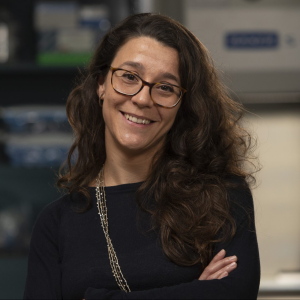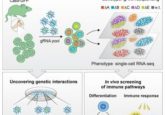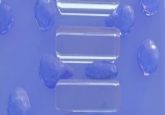Finding the perfect target: developing immunotherapies for melanoma

 Cristina Puig-Saus (left) runs a lab at the University of California, Los Angeles (CA, USA), which she started a couple of years ago, focused on the development of novel T-cell therapies for cancer, predominantly melanoma. We caught up with Cristina to discuss the new technology that her lab uses to investigate T-cell responses, the challenge of finding the perfect target and the importance of ensuring cell-therapy research is translatable to the clinic.
Cristina Puig-Saus (left) runs a lab at the University of California, Los Angeles (CA, USA), which she started a couple of years ago, focused on the development of novel T-cell therapies for cancer, predominantly melanoma. We caught up with Cristina to discuss the new technology that her lab uses to investigate T-cell responses, the challenge of finding the perfect target and the importance of ensuring cell-therapy research is translatable to the clinic.
What is the focus of your research?
Our current objective is to develop T-cell therapies for melanoma, and we have two main lines of research to help achieve this. In one project, we investigate the natural T-cell responses unleashed by immune checkpoint blockade in patients with melanoma with and without clinical benefit. We are seeing that when the treatment is successful, the T-cell responses are polyclonal and target a very limited number of immunodominant mutations in the tumor. Our goal with this project is to understand how successful T-cell responses unleashed by immune checkpoint blockade work to eliminate solid tumor masses and then use this knowledge to inform the design and development of the next generation of T-cell therapies.
In our other line of research, we use rational design and synthetic biology to develop CAR-T cell therapies for melanoma that target shared antigens. We have tested a few antigens that are expressed in melanoma and have identified one that looks promising. It is a protein that is mostly expressed intracellularly but, as a result of the vesicular transport system, a fraction of the total protein is localized on the cell’s surface for a short period of time and then gets recycled. Since this is a protein with very high expression, just a small fraction of the total protein is enough to be targeted with CAR-T cell therapy, as long as the CAR design is well-optimized. We hope that by targeting an antigen that is broadly expressed in patients with melanoma, we can develop a therapy that is applicable to a large number of patients.
What key technologies do you use to investigate and develop these T-cell therapies?
To develop CAR-T cell therapies, we use synthetic biology and protein engineering. We design and build multiple CAR constructs, test them and see how they work and then go through multiple rounds of design optimization to improve them.
For the first project that I mentioned, the characterization of T-cell responses, we are collaborating with PACT Pharma (CA, USA) to use a new technology they developed. The technology allows us to isolate neoepitope-specific T cells from the tumor and peripheral blood using libraries of DNA-barcoded single-chain primers specific for each of the mutations in the tumor. We then isolate the T cells, decode the reactivity with the DNA barcode and sequence their T-cell receptor (TCR). Finally, we use non-viral T-cell gene editing to genetically modify healthy donor T cells and replace their endogenous TCR with the isolated neoepitope-specific TCRs and assess the TCR reactivity against tumor cells from each patient.
What challenges are faced when developing effective T-cell therapies?
We are starting to see some efficacy of T-cell therapies in solid tumors, which is encouraging for the field, but I think there’s still a lot of work to do – the responses that we see in the clinic for solid tumors are still moderate. There are a number of limitations that need to be overcome to improve clinical efficacy, and the field has a lot of tools and a lot of people working on finding new creative solutions.
One of the biggest limitations is the target. For CAR-T cell therapy, there is a very low number of good surface antigens that are tumor-specific. We need to come up with creative strategies, such as logic-gating approaches, to increase the palette of potential CAR targets. For TCR T-cell therapy, there are more potential targets, including private mutations in each patient; however, TCRs are HLA-restricted, which adds an additional layer of complexity.
The tumor microenvironment is also a big challenge. Many people in the field are working on finding different strategies. I think in the next few years we will see a large number of strategies, combining TCRs and CARs with other synthetic receptors, cytokines or drugs.
Do you have any tips for best practice?
In the cell therapy field, one needs to think that what you’re doing in the lab will be translated into the clinic. I think it is very important to always pay attention to your patient target population and use patient-derived models, or as close as possible, to test efficacy. Another thing we need to consider as we move forward is the complexities of T-cell manufacturing at a large scale in a GMP setting. We need to develop therapies with potent antitumor activity, limited toxicity, and clear feasibility and scalability.





